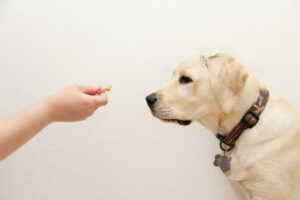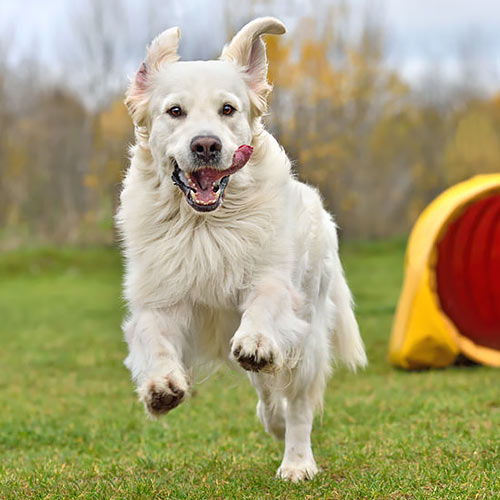Good dog trainers don’t just put treats in a bag, walk over to the dog and the dog miraculously does what the trainer desires. It takes more than that.

Here are a few thoughts (outside the box) to consider. If you want to become a dog trainer, read on! Let’s look at three prerequisites to being a good dog trainer that some people overlook.
Good dog trainers must acquire the ability to think on their feet. That is, they must be one step ahead of the dog – mentally. Some trainers produce a mediocre product because – frankly – the dog is smarter than the trainer. Now, a quality education from a reputable dog trainer school will certainly help. Hint, hint: we can help with that. Dog training is mental as well as physical. Being familiar with what’s going on inside the dog’s head can help a trainer make monumental progress with the dog’s training. Some trainers struggle with the same problem for weeks or more (and may never fix the problem) because they either do not have the knowledge to proceed, or are willing to settle for less, or lack the inner fortitude to “jump in there and get their hands dirty.” At the Dog Trainer College, our courses walk students through the steps of how to get from point A to point Z so they can be successful in training.
Another item to think about is…be fit. This doesn’t mean you have to be a perfect “10” in order to train. Whew, right?! Trainers do tend to cover a lot of ground during their day. They teach obedience dogs how to Heel, may be helping a working dog move a track that is a mile long (or more), or, as a decoy/helper must move around a lot to activate the dog’s drives. This doesn’t even consider the walking that will done by simply doing the kennel chores, exercising dogs, etc. So, a good trainer needs to be shape or else he/she will tire quickly and/or have a hard time putting in a full day’s work. The temptation is to “let things slide” and produce an inferior product.
Dog trainers must also be able/willing to communicate with people. The reason many trainers become trainers is because of our love for the dog. Those dogs, however, live within a human pack. Therefore, we must not only teach the dog but also teach the human side of this equation. We must be able to transfer our knowledge of working with a dog to the family with whom the dog lives. Good vocabulary, good manners, a smile, and honesty are all good traits. Less rudeness, more understanding, less cursing, more eye contact, all help to communicate in an effective, professional manner.
If you’re not quite up to speed with these prerequisites, don’t despair. If you’re willing to learn, willing to improve, and willing to change, you can go far!

